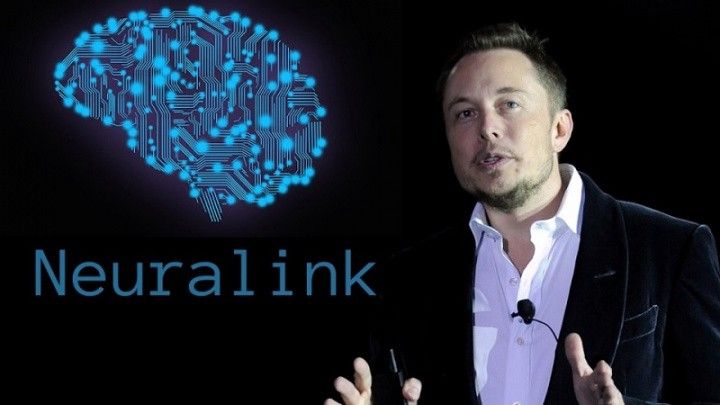
🧠 Neuralink is the next natural step for humanity
All through human history, we have used technology to evolve. The next step is to connect our brains directly to computers, which will help humanity take a giant leap forward.
Share this story!
“...humankind has created itself with the use of technology.”
In his book, One Planet is Enough, Rune Westergård, the founder of Citec and a WIP ambassador, paints a picture of some of our ancestors millions of years ago using a stone to crack bones to get to the marrow inside. Humanity's first use of technology.
Since then we have used technology for every step of our evolution. Often when you talk about new technology someone says that is unnatural. But nothing could be more natural for humans than the use of technology.
Really slow progress at first
But our progress as a species was really slow for a couple of million years because the ideas that popped up in someone's head didn't spread to many other humans. We lived in small groups and interaction with other groups was sparse. An innovation in one group often died out before it spread to others, and then there was no way to retrieve that knowledge. No Google, not even Altavista. It was dead until someone reinvented it.
This changed about a hundred thousand years ago. For a while people lived close enough for more ideas to spread and live on rather than die out. Instead of one step forward and one back, it became two steps forward and one back.
For the first time in history knowledge started to accumulate. New ideas were built on top of old ideas. We gained a collective intelligence.
Humanity takes off
Before this every major innovation took hundreds of thousands of years. After this the pace of innovation accelerated and has been speeding up ever since. Now it is faster than ever because we have connected half the world's population into one gigantic brain – the internet. And also given half the world's population the freedom to think and share ideas freely – democracy.
We obviously need to connect all of humanity and make sure every human being lives in a democracy, but there is also more to do on the technology side.
Suppose you want to get the thoughts in your head out of your skull and expose them to other people you are reduced to two thumbs' speed. Or maybe a keyboard. Or how fast you can talk.

Likewise, if you want to get information into your brain – again, two thumbs typing on a smartphone, slowly reading what you find or even slower listening to what someone is saying. Not really the speed of thought.
What if you could google stuff with your brain? Or send your thoughts directly to someone else? Or store your memories and easily access them?
Enter: Brain-machine interfaces
This is what Elon Musk's Neuralink demonstrated recently, or rather a very early, crude version of a brain-machine interface.
According to Wikipedia, a brain-machine interface "is a direct communication pathway between an enhanced or wired brain and an external device,"
You in some way directly connect your brain to a computer. Like turning on bluetooth for your mind. When it is on, you dramatically increase the bandwidth for communicating with the computer.
There are of course many different stages of this development. Tim Urban summarizes them like this:
Level 1: I want to know a fact. I call on the cloud for that info—like Googling something with my brain—and the answer, in text, appears in my mind's eye. Basically what I do now except it all happens in my head.
Level 2: I want to know a fact. I call on the cloud for that info, and then a second later I just know it. No reading was involved—it was more like the way I'd recall something from memory.
Level 3: I just know the fact I want to know the second I want it. I don't even know if it came from the cloud or if it was stored in my brain.
Level 4: Beyond just knowing facts, I can deeply understand anything I want to, in a complex way.
As you can see, level 1 is not far from where we are today, just faster. The smartphone is not directly connected to our brains, but very close to it. We carry it with us everywhere, all the time.
When you think of future technologies the step often seems dramatic, like a big shift. And it is, but when it happens it usually doesn't feel that way. We went from huge and expensive mobile phones in the 1980s, to smaller and less costly mobile phones that actually were mobile in the 1990s, to smartphones in the 2010s. The leap from Nokia 3310 to the iPhone was a pretty big one, a new level, but it didn't feel dramatic. We just did it.
Brain-machine interfaces are already in use
We already have several different brain-machine interfaces, like cochlear implants for people with hearing loss.
We have deep brain stimulation to alleviate the symptoms of Parkinson's Disease, we have early trials of chips to restore vision, we have the cochlear implant—so to us it doesn't seem like that big of a stretch to put devices into a brain to read information out and to read information back in.
Flip Sabes, Neuralink
I, for one, welcome our new cyborg pig overlords
Neuralink, like all of Elon Musk's creations, is extremely ambitious. They want to help us get to level 4. The way there is long and very hard, but also, like all of his companies, Neuralink moves fast.
They recently showed pigs with the first version of their BMI installed. You could see the connection between the snout and the brain and neurons firing when the pigs rooted around.
The next natural step for humanity
For over two million years technology has been an extension of ourselves. We are now more than ever connecting ourselves with the technology we've created. It allows us to spread ideas and build our collective intelligence, which leads to a better and better existence for all of humanity.
When our ideas can flow freely with a brain-machine interface and we instantly can access all of our collective intelligence, humanity will take a giant leap forward. And it will be the most natural thing in the world.
Any sufficiently advanced technology is indistinguishable from magic.
Arthur C Clarke
Mathias Sundin
For a deeper dive into Neuralink and BMIs I recommend Tim Urban's article Neuralink and the Brain's Magical Future.
By becoming a premium supporter, you help in the creation and sharing of fact-based optimistic news all over the world.


